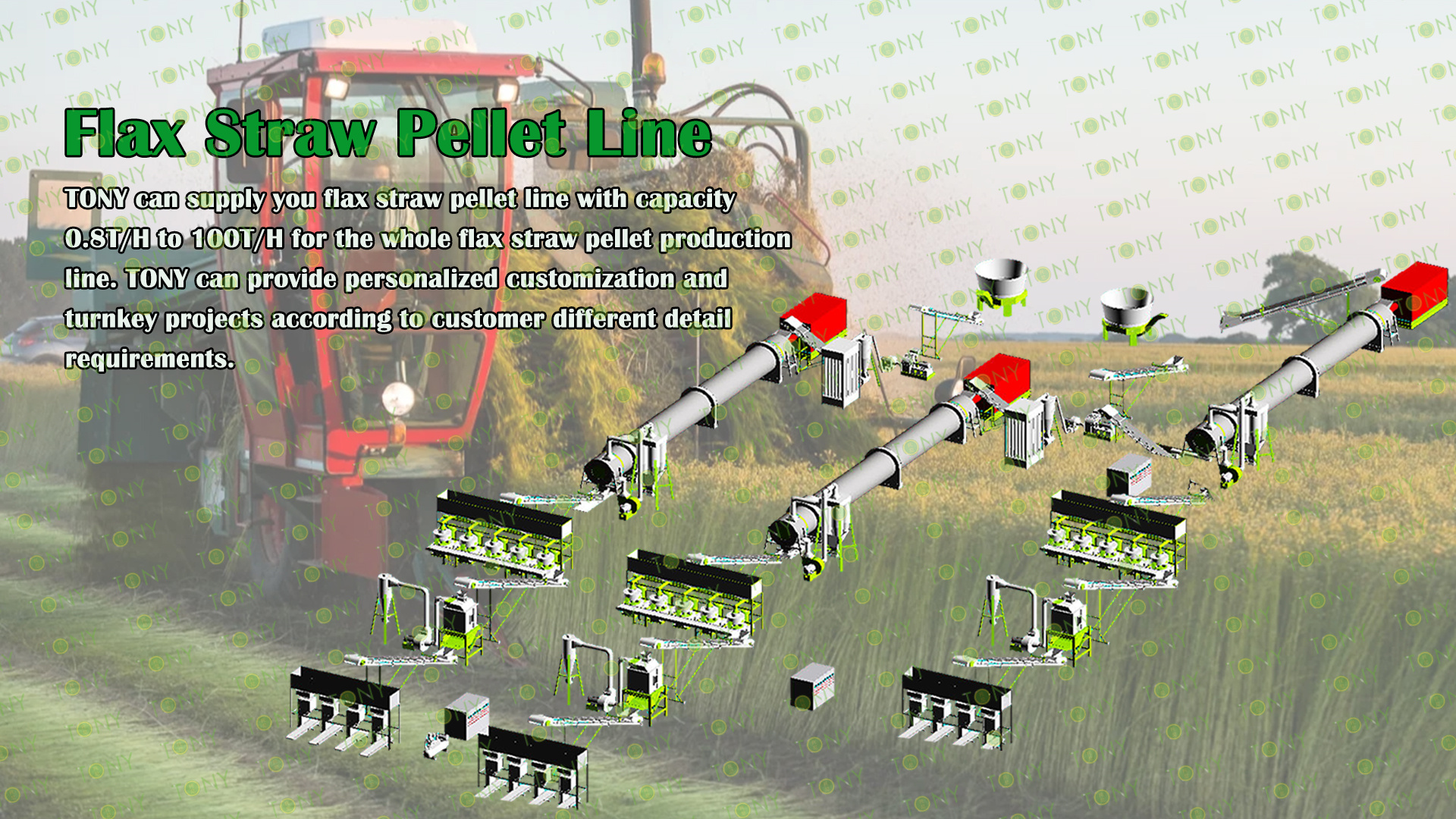
TONY Design 55-60Ton/Hour Flax Straw Pellet Production Line Specification
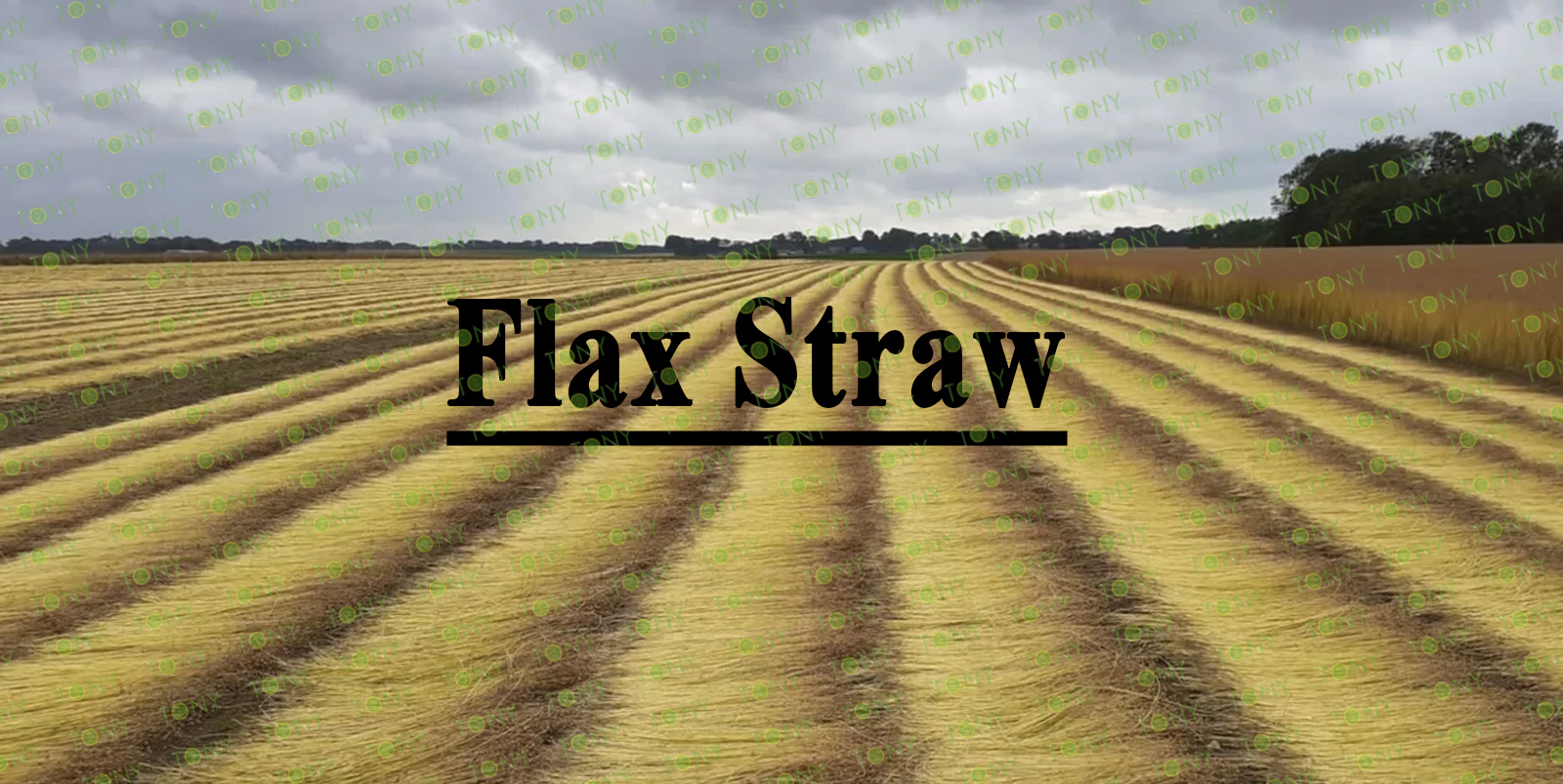
Resource Distribution Of Flax Straw
As an important agricultural by -in -law, its resource distribution is closely related to the planting area of flax.. The following are some detailed information of the distribution of flax straw resources.
1. European Flax Straw Resources
Europe is one of the important distribution areas of globalflax straw resources. European linen-linen-linen & hemp said that in 2024, European linen harvesting is optimistic, and the average straw production of spring linen is expected to be 6-7 tons per hectare. Seeing a significant milestone. Although the performance of 30,000 hectares in winter in winter is slightly lower, the overall prospects are still strong. It is expected that the planting area of European linen ™ will reach at least 180,000 hectares (including spring and winter linen), which is the highest level since 2020
2. Chinese Flax Straw Resources
China is also one of the main distribution areas offlax straw resources. China's main linen production areas include Heilongjiang, Xinjiang and Yunnan. The 75th Zhaosheng Linen 75th Regiment of the Heilongjiang Nongcheng Area is one of the main producing areas of China's linen
3. Flax Straw ResourcesIn Other Areas
In addition to Europe and China, other regions such as Turkey, Romania, Hungary, former Yugoslavia, Bulgaria, Russia, Ukraine and other countries also have linseed planting. The linen planting area of these regions accounts for 58%of the world's.
In summary, the resource distribution offlax straw is mainly concentrated in Europe, China, and other linseed countries and regions. Theflax straw resources in these areas not only support the local agricultural development, but also provide a rich source of raw materials for the comprehensive utilization of straw.
Flax Straw Burning Has Many Disadvantages But No Benefits
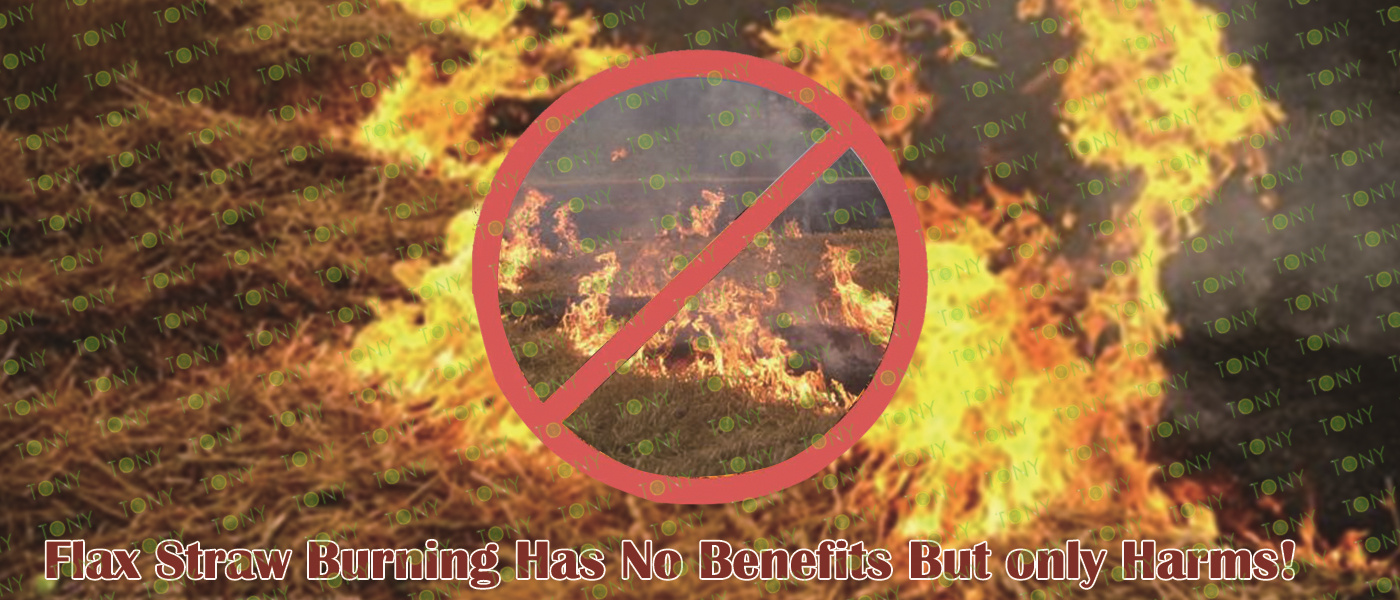
Harm Of Flax Straw Incineration
Any type of straw (including flax straw) will bring a series of environmental and health problems. The main hazards of burning straw (including flax straw):
1. Air Quality Pollution
Burning flax straws produce a large amount of toxic and harmful gases, such as carbon monoxide, hydrocarbons, sulfide, nitrogen oxides, photochemical oxidants, and suspended pellets. These pollutants not only have adverse effects on air quality, but also may endanger human health, lead to stimulation of eyes, nose and throat, and even cause diseases such as bronchitis.
2. Soil Structure Destruction
Burning flax straw will destroy the soil structure, causing the beneficial microorganisms in the soil to be burned to death, humus and organic matter are mineralized, thereby changing the physical properties of the soil, aggravating soil plate knots, and affecting the quality and yield of crops in the next season.
3. Fire Risk
When burning flax straw, due to the wind to help the fire, the fire is difficult to control, it is easy to cause fire, and seriously threatens the safety of the people's lives and property.
Impact On Traffic Safety.
The smoke formed by the burning flax straw will reduce the visibility of air, affect the normal operation of civil aviation, railways, and highways, which can easily cause traffic accidents, affect personal safety.
4. Destruction Of Environmental Image
The rolling dense fog and sliced scorched soil formed by the burning flax straw will cause great damage to the environmental image of a region.
In summary, linseed straw, like other types of straw, will have a negative impact on the environment and human life. Therefore, a reasonable way of treatment of straw should be adopted, such as straw returning to the field, making organic fertilizer, as animal feed or biomass fuel, to reduce the harm caused by burning straw.

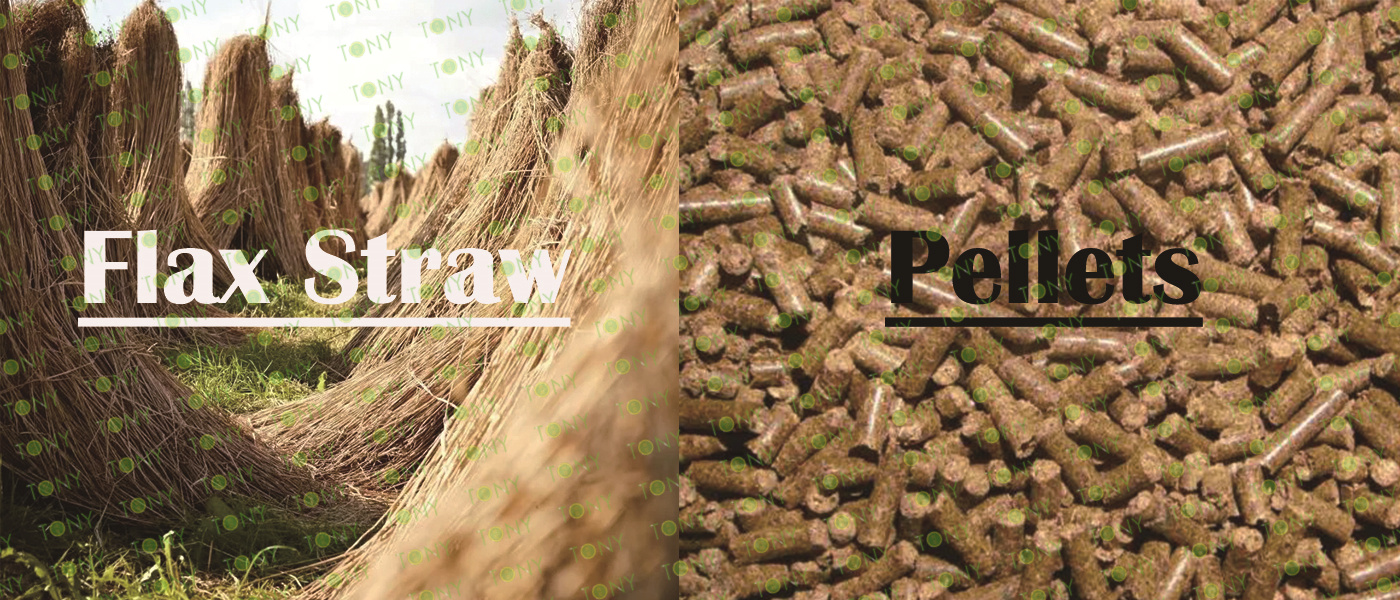
The Biomass Function Of Flax Straw:
Flax Straw is the flax plant (scientific name :Linum)The stem part of usitatissimum, a valuable crop by-product. Flax is known as the "king of textile", and its straw also has a wide range of application values.
Flax Straw is an excellent biomass energy source. Flax Straw is rich in cellulose and lignin, of which the content of cellulose is about 70%. This makes flax straw an ideal source of biomass energy for the production of paper, sheets, biomass energy, etc. Through proper treatment and processing, flax straw can be converted into biomass pellet fuel, used in heating, power generation, hot water and so on. This can not only save traditional energy resources, but also help reduce environmental pollution ,Through rational use of flax straw, it can provide more development opportunities for agriculture, energy and industry.
Application Of Flax Straw Pellets:
Flax Stalk is the main raw material of flax straw pellets. After slicing, grinding, drying, granulation, cooling and packaging, flax stalk is finally made into environment-friendly pellet fuel. Because of its high calorific value and full combustion. It is a clean and low-carbon renewable energy. It has a long combustion time, intensive combustion, high furnace temperature, economic benefits, and no pollution to the environment, and is a high-quality environmental protection fuel to replace conventional fossil energy.
Flax Straw pellets replace the traditional diesel, heavy oil, natural gas, coal and other petrochemical energy sources, as a fuel for household fireplaces, heating furnaces, industrial boilers, drying equipment, heating furnaces and other thermal equipment.
The Benefits Of Ppressing Flax Straw Into Biomass Pellet Fuel Can Be Seen From The Following Aspects:
Environmental benefits: The content of harmful substances in the exhaust gas and waste residue emitted after flax straw combustion is lower than that of traditional fuels, which can have a smaller impact on the environment.
Energy efficient utilization: flax straw can produce biomass pellet fuel with high calorific value after burning, and its energy utilization efficiency is high.
Economic cost savings: Flax straw is usually a waste product of agricultural production, and its storage and disposal costs are high. By converting it into biomass pellet fuel, the cost of storage and processing can be reduced.
Promote sustainable agricultural development: Farmers can convert waste flax straw into biomass pellet fuel and sell it, thereby increasing income and promoting sustainable agricultural development.
Reduce dependence on traditional fuels: flax straw biomass pellet fuel can replace traditional fuels and reduce dependence on traditional fuels, thereby reducing the need for non-renewable energy sources.
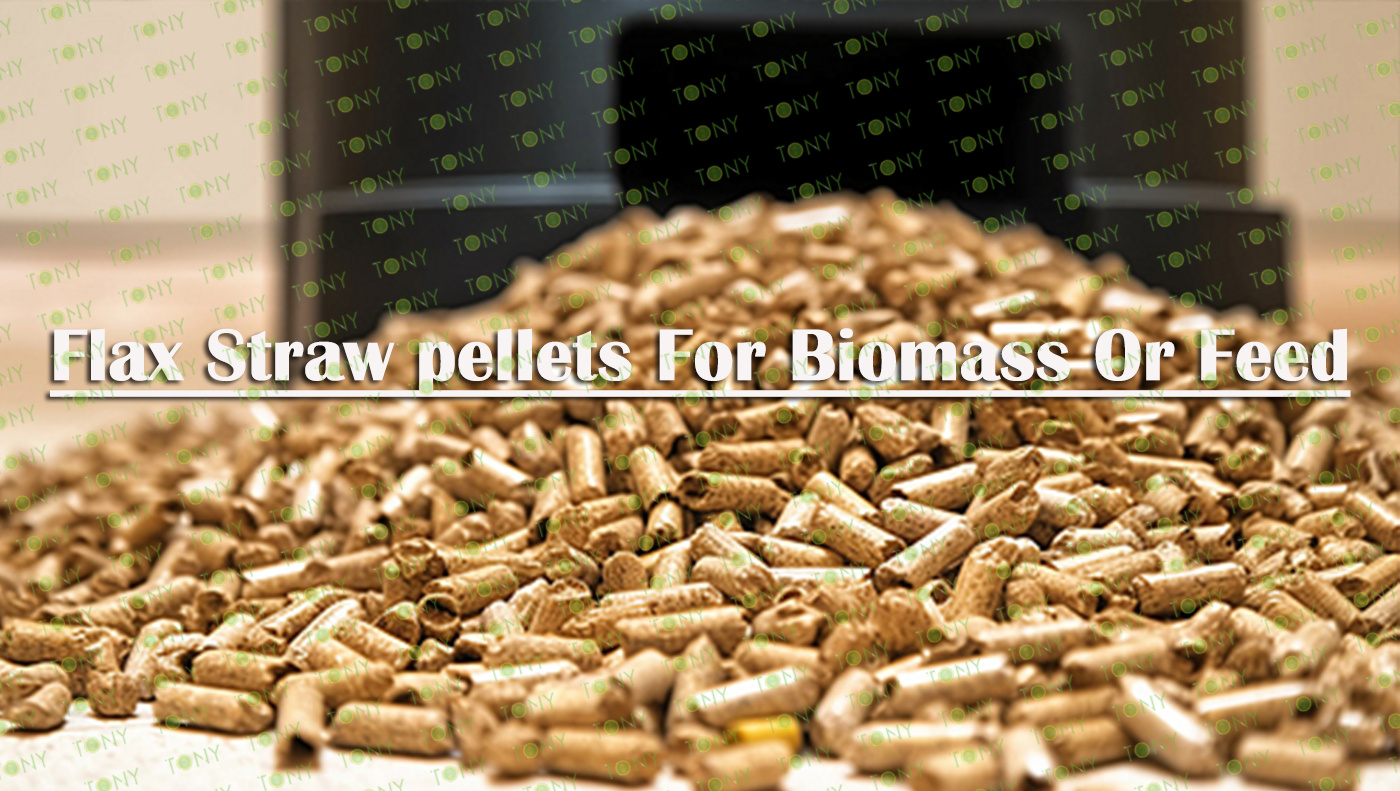

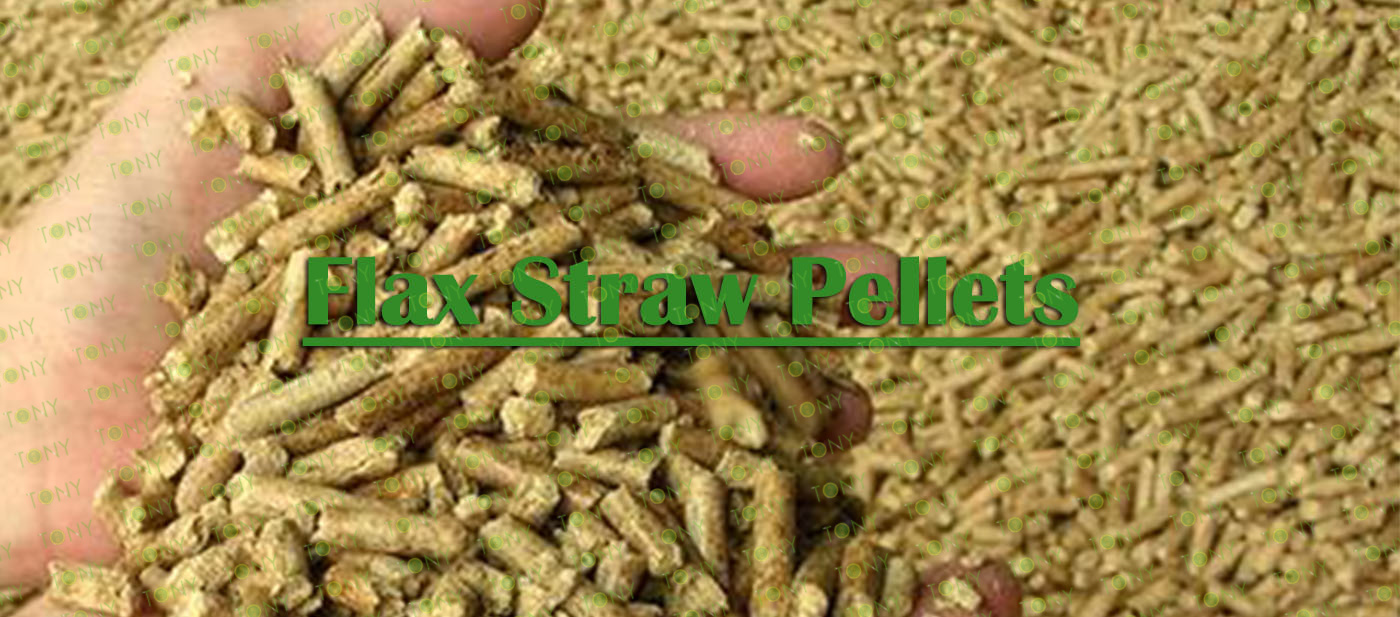
1. Energy Saving Benefits Of Flax Straw Pellet Fuel
Flax straw pellet fuel is easy to catch fire and burn out, and the carbon content in ash is close to zero. The use of biomass fuel can reduce the excess coefficient of boiler air, reduce the ventilation resistance of the boiler bed, reduce the power consumption of the fan, reduce the smoke loss, and the thermal efficiency of the boiler can be increased by 10% to 20%.
2. Environmental Benefits Of Flax Straw Pellet Fuel
After coal is burned in the boiler, a large amount of fly ash, slag,SO2 and CO2 are discharged, of which fly ash and SO2 are the main air pollutants, slag occupies a large amount of land,SO2 is the main greenhouse gas. Flax straw pellet fuel can minimize the emission of waste gas and pollutants, and has a very significant environmental benefit. It is estimated that compared with the combustion of second-class bituminous coal, the emission reduction rate of fly ash (dust), slag and SO2 of flax straw pellet fuel is 93%, 69% and 91%, respectively, and the CO2 emission is zero.
3. Economic Benefits Of Flax Straw Pellet Fuel
At present, the purchase price of flax straw is low, after calculation, deducting the cost of raw materials, energy consumption, human costs, equipment depreciation, equipment maintenance and other costs, pellet manufacturers, basically 1 year can recover, investment, economic benefits are very significant. Straw molding fuel can not only be used as an alternative fuel, but also a product that can earn foreign exchange in large quantities. According to relevant information, the small package retail price of biomass fuel in the US market is 170 US dollars /t, and the large package price is about 135 US dollars /t; The price for delivery in Sweden is $150 /t. It is estimated that the mass production cost of straw molding fuel is not more than 300 yuan /t, and it is exported by 70 to 80 US dollars /t, and such a price is competitive in the international market. If it can scale production and continue to export in large quantities, it will be of great significance to promote farmers and agricultural forestry to increase comprehensive economic benefits.
With the continuous progress of flax straw pellet fuel production technology and the great attention of governments at all levels, flax straw pellet fuel production will be further large-scale, industrialization, flax straw pellet fuel production technology can not only effectively solve the problem of rural straw waste and incineration at will, turn it into treasure, and provide an important way for farmers to increase income, at the same time can achieve dioxide Zero carbon emissions, sulfur dioxide, nitrogen oxides and other emissions, are lower than international emission standards, can effectively improve the ecological environment, and then assume China's solemn emission reduction commitments to the world. Therefore, it is imperative to accelerate the energy utilization of flax straw.

Flax straw pellets when burning smokeless, tasteless, clean and environmentally friendly, its sulfur content, ash, nitrogen content is far lower than coal, oil and other carbon dioxide zero emissions, is an environmentally friendly clean energy, enjoy the "green coal" reputation.
(1)Low Cost And High Added Value:
The cost of use is much lower than that of petroleum energy, which is a clean energy substitute vigorously advocated by the state and has a broad market
(2)Increased Density, Convenient Storage And Transportation:
The molded fuel is small in volume, heavy in ratio and high in density, which is convenient for processing, conversion, storage, transportation and continuous use.
(3)Efficient Energy Saving:
The calorific value of 3 to 4 kg flax straw pellet fuel is equivalent to the calorific value of 1 kg diesel fuel, but the cost is less than half of diesel fuel, and the burnout rate of pellets can reach more than 98%.
(4)Wide Application And Strong Applicability:
The molded flax straw pellet fuel can be widely used in industrial and agricultural production, power generation, heating and heating, boiler burning, cooking, enterprises and families.
Biomass pellet fuel does not add any additives in the production process, so the smell of raw material fuel still maintains its original raw material. As we all know, the environmental protection of biomass pellet fuel is obvious to all, and it is also the reason why consumers favor environmentally friendly materials. Although biomass pellet fuel will produce tar, hydrogen sulfide, nitrogen oxide and other substances, but because the modern level of technology has been relatively perfect and mature, the emission of harmful substances is obviously less than the national standard.
The direct combustion of biomass fuel will still be the main way of biomass energy utilization for a long time in the future. Biomass pellets will be the most popular products for new energy construction.

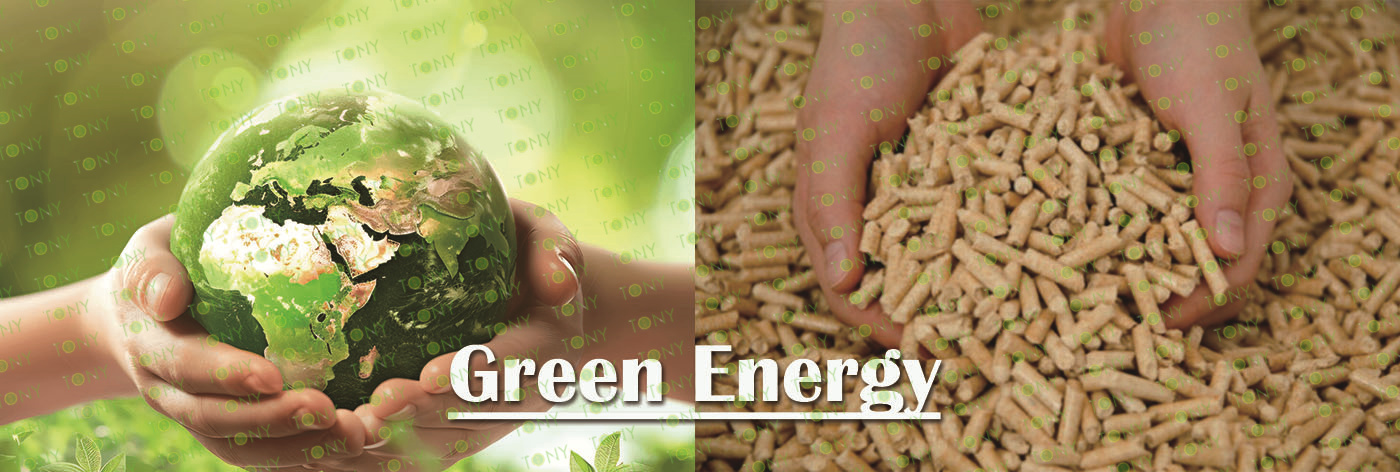
1.The Working Principle Of Flax Straw Biomass Pellet Processing Equipment
Flax Straw biomass pellet processing equipment is the bale or packet ofFlax Strawand other biomass raw materials chopped, compressed into pellet fuel processing equipment, its working principle is through the shredder and other pretreatment equipment will be Flax Straw raw materials chopped, and then pressed through the pelletizing machine, and finally made in line with the quality standards of pellet biomass fuel.
2.Characteristics Of Flax Straw Biomass Pellet Processing Equipment
(1) Flax Straw biomass pellet processing equipment has the characteristics of high efficiency and low energy consumption, which can quickly process biomass raw materials into fuel pellets, and the production efficiency is greatly improved.
(2) Biomass pellet machine material adaptability, suitable for the molding of various biomass raw materials, pellet machine has a variety of specifications of the mold, according to different biomass raw materials to choose the corresponding mold for processing, improve the adaptability of processing.
(3) The design of Flax Straw biomass pellet processing equipment is mature, the finished pellet molding is stable, the output is stable, and the quality is high
(4) Biomass pellet processing equipment is simple to operate, easy to use, high degree of automation, less labor, effectively reduce labor intensity, improve production
3.Application Scenarios Of Flax Straw Biomass Pellet Processing Equipment
(1) Domestic solid fuel: Flax Straw pellet fuel has a high utilization rate, which is conducive to storage, use, health and safety, and can be used for home heating.
(2) The main solid fuel for industrial boilers: replace raw coal, heavy oil and gas to reduce air pollution. Each 10,000 tons of biomass fuel ignited can replace 7,000 tons of standard coal, reduce so2 emissions by 165 tons, smoke and dust emissions by 80 tons, and carbon dioxide emissions by 14,400 tons
(3) Thermal power generation: the fuel heat value can reach 3400~6000 kcal.
Simple words to describe biomass pellet fuel, that is, "environmental protection", "energy saving", "renewable", "zero carbon emissions". Biomass fuel is the best renewable energy to replace coal. From the point of view of cost, energy saving and environmental protection, biomass fuel is a better alternative to coal.

The process of pressing flax straw into pellets mainly includes the following steps:
Raw Material Preparation: First of all, the waste flax straw is collected and sorted to remove the woody components. Then use the rotary cutter and crusher to break the raw material into flakes and sawdust, reduce the surface area of the raw material, and facilitate subsequent drying and granulation.
Drying Treatment: If the water content of the raw material after grinding is high, it is necessary to use a dryer for drying treatment to reduce the water content to the range suitable for granulation, usually controlled between 10% and 15%. This can improve the pelletizing efficiency and particle quality.
Pelletizing: The use of biomass granulator for granulation, the dry raw materials into the granulator for granulation. In the granulation process, the raw material is compressed into pellets with a certain density and strength. When granulating, it is necessary to control the speed and pressure of the machine to ensure the quality of the pellets.
Cooling And Screening: The temperature of newly produced biomass pellets is high, and the pellets need to be cooled to prevent the pellets from deforming or breaking at high temperatures. The cooling method can be natural cooling or special cooling equipment can be used. After cooling, screening is performed to remove unqualified pellets and impurities.
Packaging And Storage: Screened biomass pellets are packaged in bags or tons, depending on the customer's needs and mode of transport. Store packaged pellets in a dry, ventilated, moisture-proof warehouse to avoid moisture, mold, or spoilage.

TONY Brand 55-60 Ton/Hour Flax Straw pellet manufacturing plant can be Flax Straw, various crop straw, such as corn stalks, cotton straw, soybean straw, etc., with Flax Straw as raw materials, after pretreatment and processing solidified into high-density straw pellet fuel, which is an ideal fuel to replace coal and oil, and has the role of energy saving and emission reduction. At present, it has been widely used in countries with various crop straw raw materials.
1.Capacity: 55-60 Ton/Hour
2.Raw Materials: Bales of Flax Straw,wheat straw,corn stalks, cotton stalks, etc.
3.Moisture: Wet type, about 40-55%.
4.Application: All kinds of Crop straw.
5.Suitable Customers: Green energy companies, large farms, private growers and other customers with advantages in straw raw materials.
6.Finished Pellets Markets: Large power plants (domestic customers, as well as Japan and South Korea, mainly South Korea more), domestic heating, industrial heating, combustion heat, heating heating, boiler room, school canteen, foundry heat source.

1.Project Name: Flax Straw Pellet Line
2.Raw Materisl: Bales of Flax Straw
3.Moisture Of Raw Material: Wet Type 40-55%
4.Capacity: 55-60Ton/Hour
5.Process: Grinding Process-Fine Crushing Process-Drying Process-Pelleting Process-Cooling Process-Packing Process
6.Main Machine: Straw Cutter,Hammer Mill, Rotary Drum Dryer,TONY Pellet MachineTYJ860-Ⅲ-250kw,Pellets Cooler,Packing Machine, And Belt Conveyors
Total Power: About 6200KW
Need Area: About 7000-8000㎡
Project Country: Republic of Belarus


|
Project Brief Introduction: 1.Product: Flax Straw Pellet line. 2.Capacity:55-60T/Hour 3.TONY Brand 55-60Ton/Hour Flax Straw Pellet Line Project Process 4.Main Machine: Straw Cutter,Hammer Mill, Rotary Drum Dryer,TONY Pellet MachineTYJ860-Ⅲ-250kw,Pellets cooler,Packing Machine And Belt Conveyors 5.Total Power: About 6200KW 6.Need Area: About 7000-8000㎡ 7.Country: Republic of Belarus |
Project Layout For Customer |
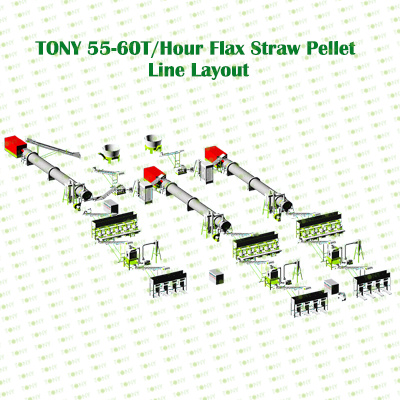 |


|
How to use TONY pellet line to proceed from Flax Straw into pellets? It mainly contains the following steps and machines as following: 1.To Use TONY Straw Cutter To Grind Flax Straw Bales φ ≤2.500mm Into 60-70mm Flax Straw Pieces. 2.To Use TONY Hammer Mill To Crush 60-70mm Bigger Flax Straw Pieces Into 8-14mm Flax Straw Dust. 3.To Use TONY Rotary Drum Dryer To Dry The 40-55% Flax Straw Dust.Into 10-15% Flax Straw Dust. 5.To Use TONY Vertical Ring Die Pellet Machine To Products Pellets With φ6-8mm. 6.To Use TONY Galvanized Cooler To Cool Pellets From 80-90℃ To 20-30℃. 7.To Use TONY Packing Machine To Packing Pellets To 15-50Kg/Bags. You Can Contact TONY To Get For More Details Information And Quoation. TONY Can Supply You All The Products As Above With Competitive Price And Excellent Quality. |
|
||||||||||||||||||||||||||||||||||||||||||||||||||
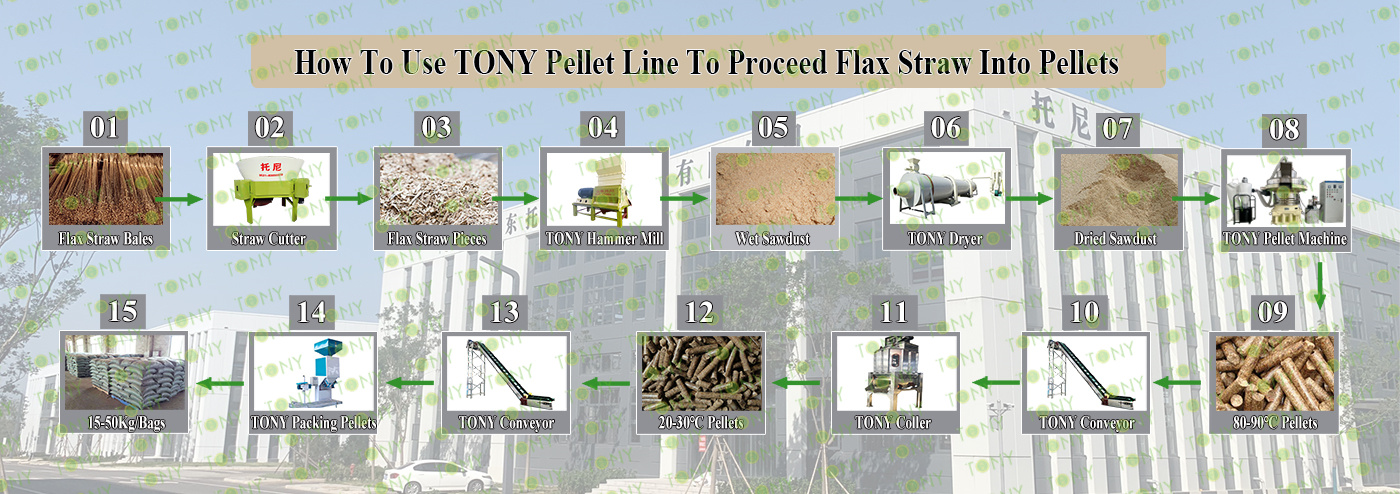


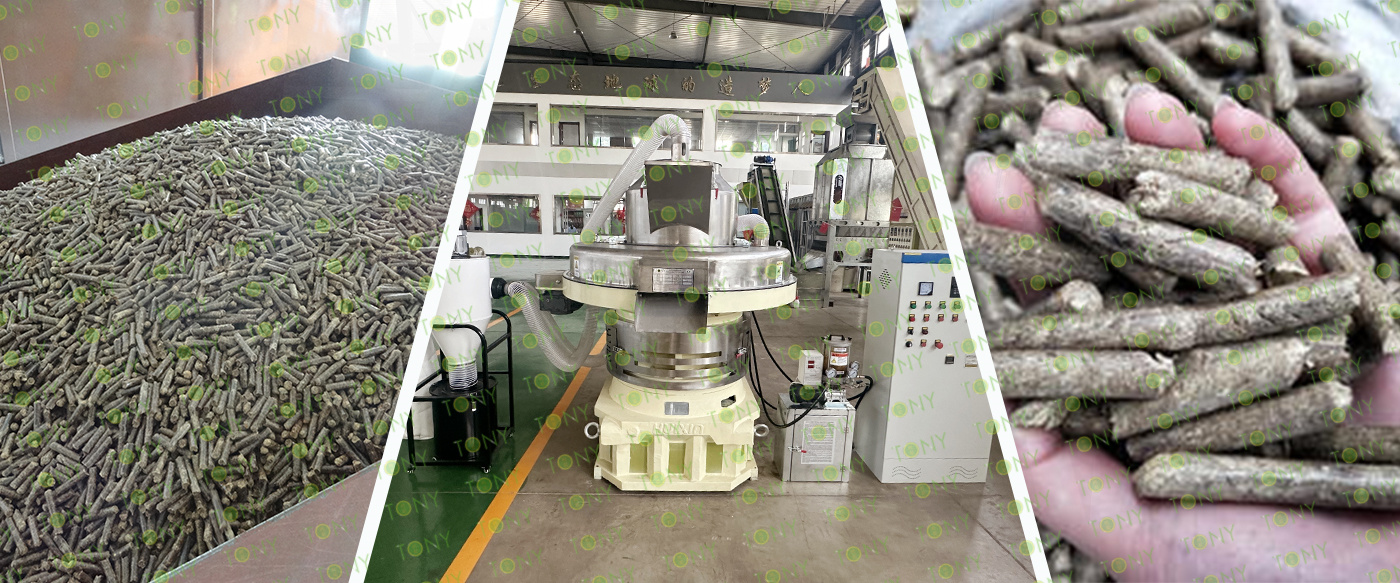
Following TONY Will Introduce For You For All The Necessary Machinery That Will Be Used For The Whole Pellet Production Line. Some machines can be custom made by customer according to different customer's detailed demand.Contact TONY for more details with quotation and layout.
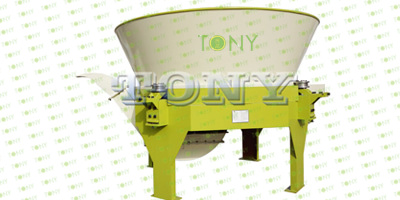 |
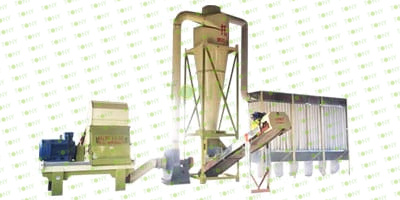 |
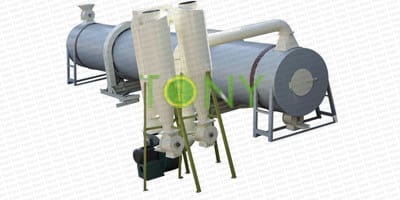 |
 |
| Straw Cutter | High Effective Hammer Mill | Rotary Drum Dryer | Hot Stove |
|
1.To Grind Flax Straw Bales Diameter <2.5m Into 60-70mm Pieces 2.Model: TPX3800*2sets 3.Capacity: 15-25Ton/Hour/Set |
1.Crush 60-70mm Pieces Into 8-14mm Sawdust. 2.Model: TFD75-500*2sets 3.Capacity: 25-30Ton/Hour/Set |
1.To Dry The 40-55% Sawdust Into 10-15% Sawdust. 2.Model: THGD3.8* 28*3sets 3.Capacity: 18.5-20Ton/Hour/Set |
1.Heat Source For Rotary Drum Dryer 2.Size: 8m*3m*3m*3sets(Fitted with dryer) 3.Fuel: biomass pellets, wood chips, straw, etc |
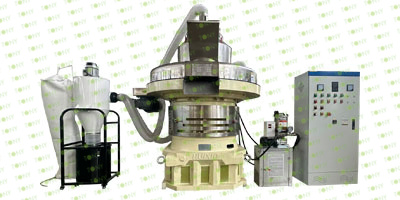 |
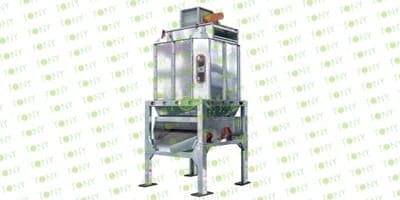 |
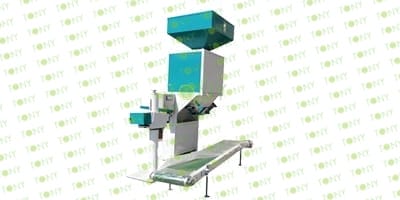 |
|
| Vertical Ring Die Sawdust Pellet Machine | Galvanised Cooler Separator | Semi- Auto Packing Machine | Belt Conveyor |
|
1.Model: TYJ860-Ⅲ-250kw*15 sets 2.Capacity: 3.5-4.5Ton/Hour/Set 3.New 304SS Type |
1.To Cool Pellets From 80-90℃ to 20-30℃ 2.Model: TLN-10*3sets 3.Capacity: 18.5-20Ton/Hour/Set |
1.Packing Pellets To 15-50KG/Bags. 2.Model: TBF-50*12sets 3.Capacity: 4.5-5Ton/Hour/set |
1.Transport Straw pieces,Sawdust,Pellets. 2.Width: 100cm *19sets 3.Capacity: Designed With The Whole Line |

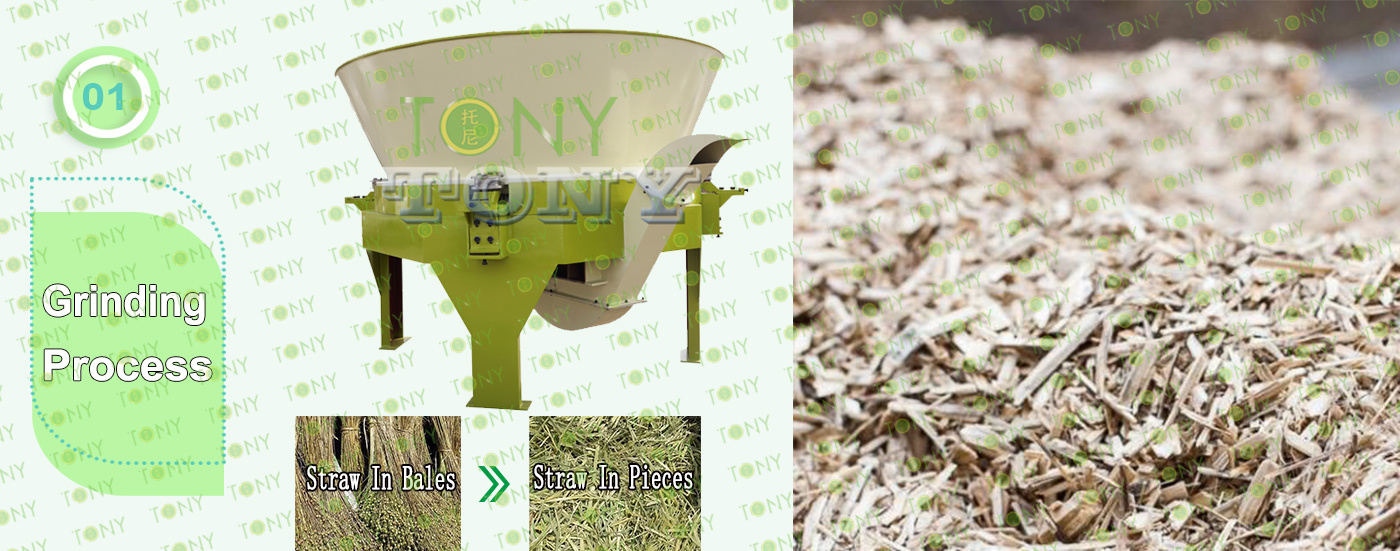
|
1.Grinding Process: A.The process is mainly used to grind flax straw within 2.5m in diameter into Flax Straw pieces. The materials in bundles or packets are crushed by blade cutting and feeding, which is suitable for wheat stalk, peanut seedling, sweet potato seedling, cotton stalk, corn stalk, grass, seaweed and so on. B.This customer use TONY Brand TPX3800 model-2sets Main Parts: (1)TONY's new rotary cutting machine (2)Turntables that can store large quantities of materials (3)High-quality brand motor, strong power (4)Electronic control system allows the equipment to be used normally (5)Contact TONY for more details with quotatio |
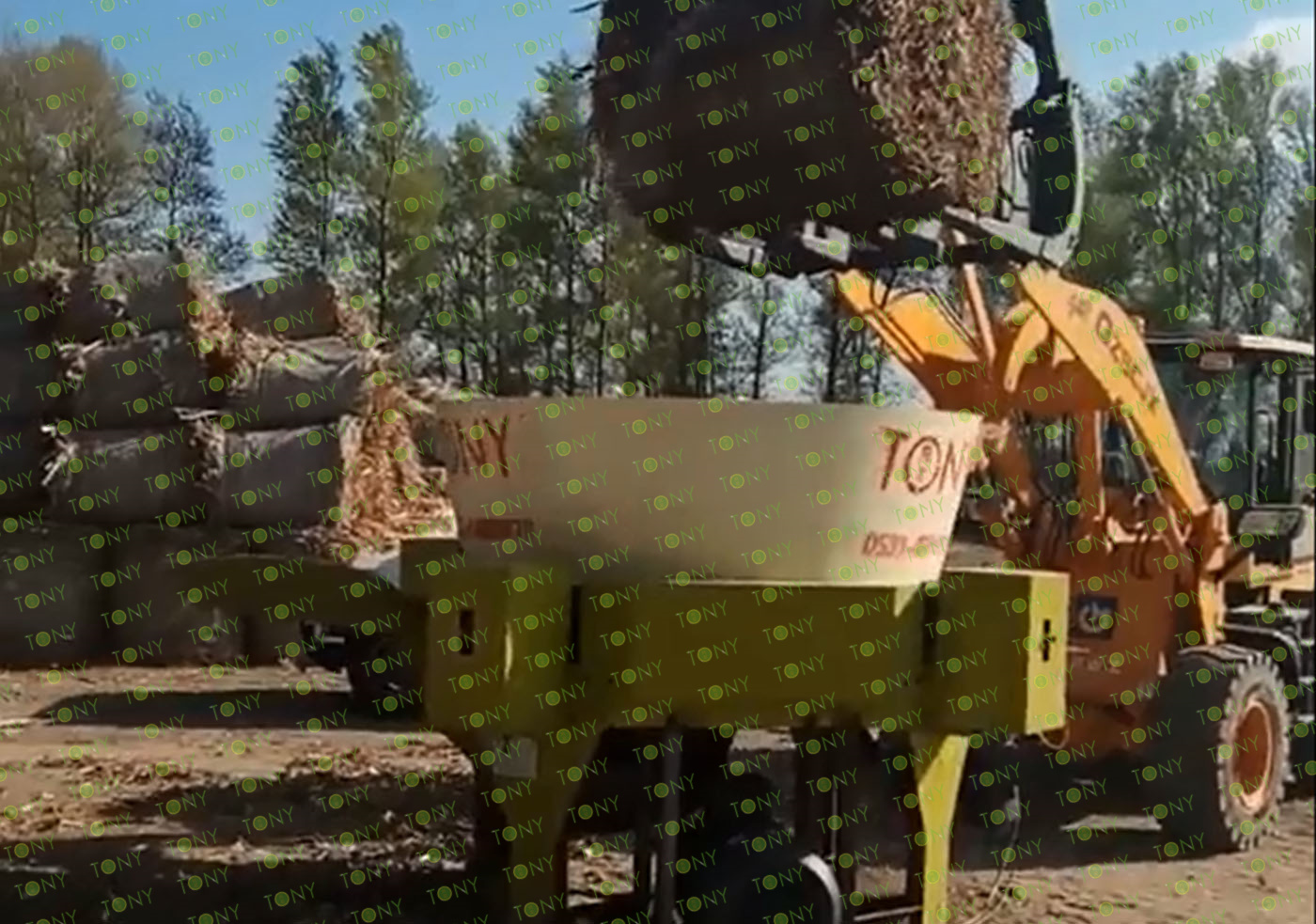

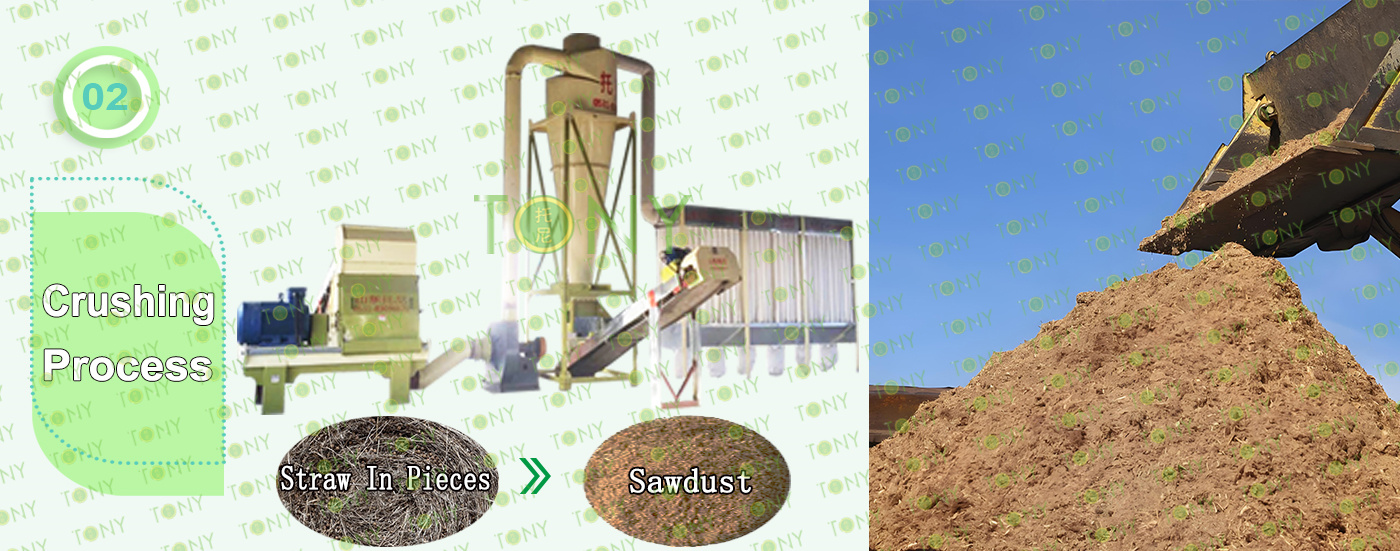
|
2.Fine Crushing Process: A.The process is mainly used to crush 60-70mm flax Straw pieces into 8-14mm sawdust. B.Capacity: 25-30 tons/hour/set. C.TONY uses high efficiency hammer mill TFD500KW-2Sets. Main parts: (1)TONY High Effective Hammer Mill. (2)Galvanized dust collector. (3)Sawdust conveying fan. (4)Cyclone with airlock. (5)Electrical cabinet. |
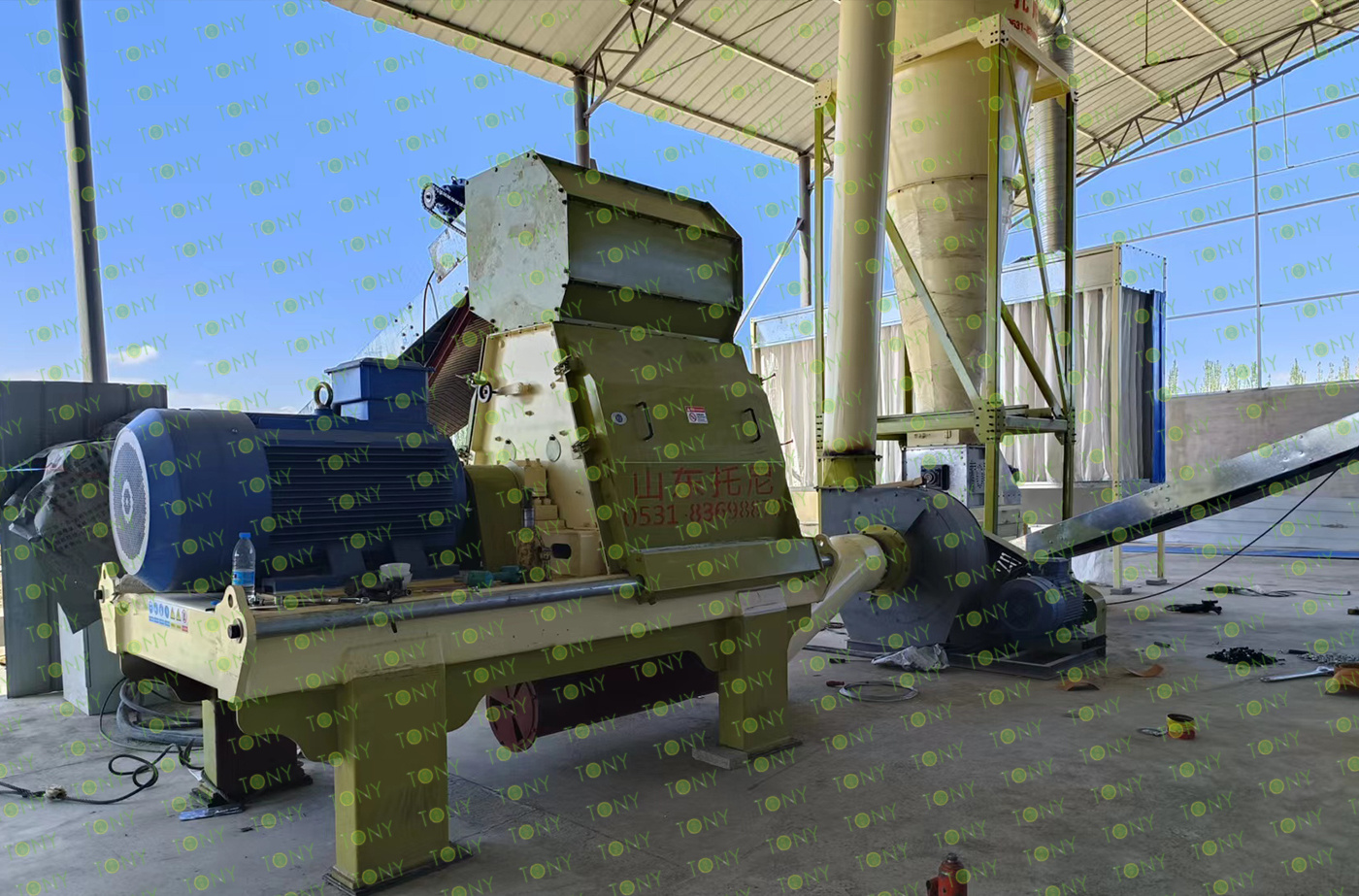

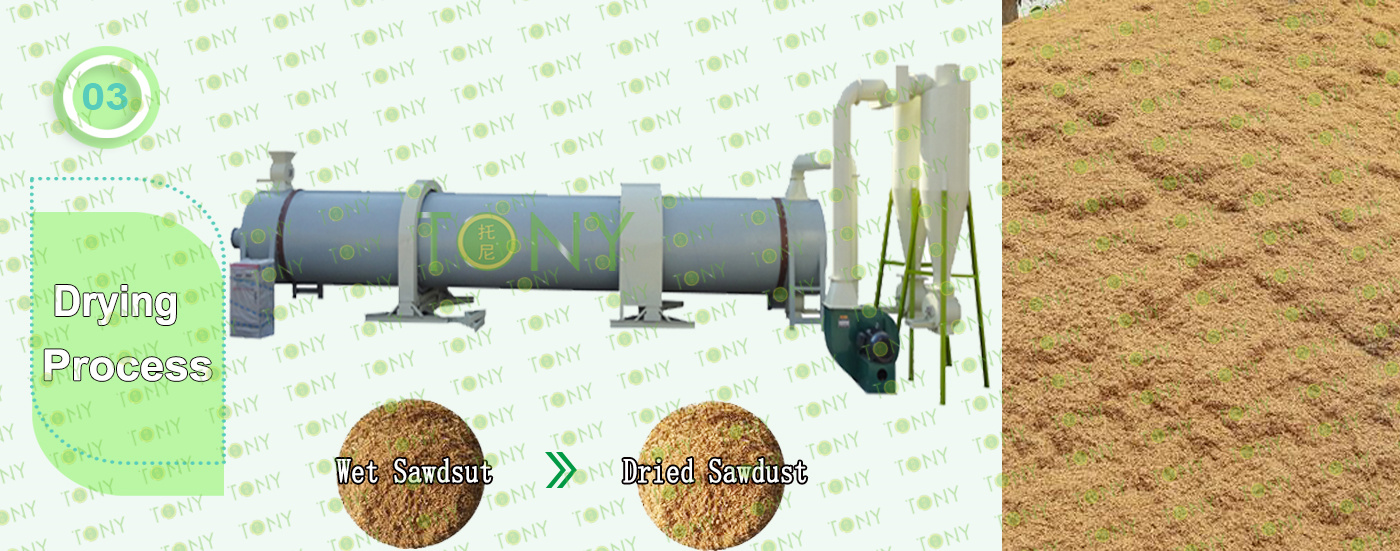
|
3.Sawdust Drying Process: A.This process is mainly used to dry the sawdust from 45% to 10-15%. B.Capacity: 18.5-20Ton/Hour/set. C.TONY use 3sets of 3.8*28m single layer rotary drum dryer for this process,this customer use biomass waste as buring raw material with hot stove 8*3*3m. TONY hot blast stove is made of firebrick pan, shell with H steel plate as the frame. There are 3 layers of fire blocking device inside, which can effectively prevent the fire from entering the tumble dryer. TONY dryer use spiral tube material, which has higher heart rate and is not easy to deform. Unlike other manufacturers with iron plate splicing welding, very easy to deformation. Main Parts: (1)TONY's Rotary Drum Dryer Main Body. (Reducers With Motors and Pips.) (2)TONY's Wood Waste Hot Stove. (3)Fan Blower+Cyclone With Airlock. |
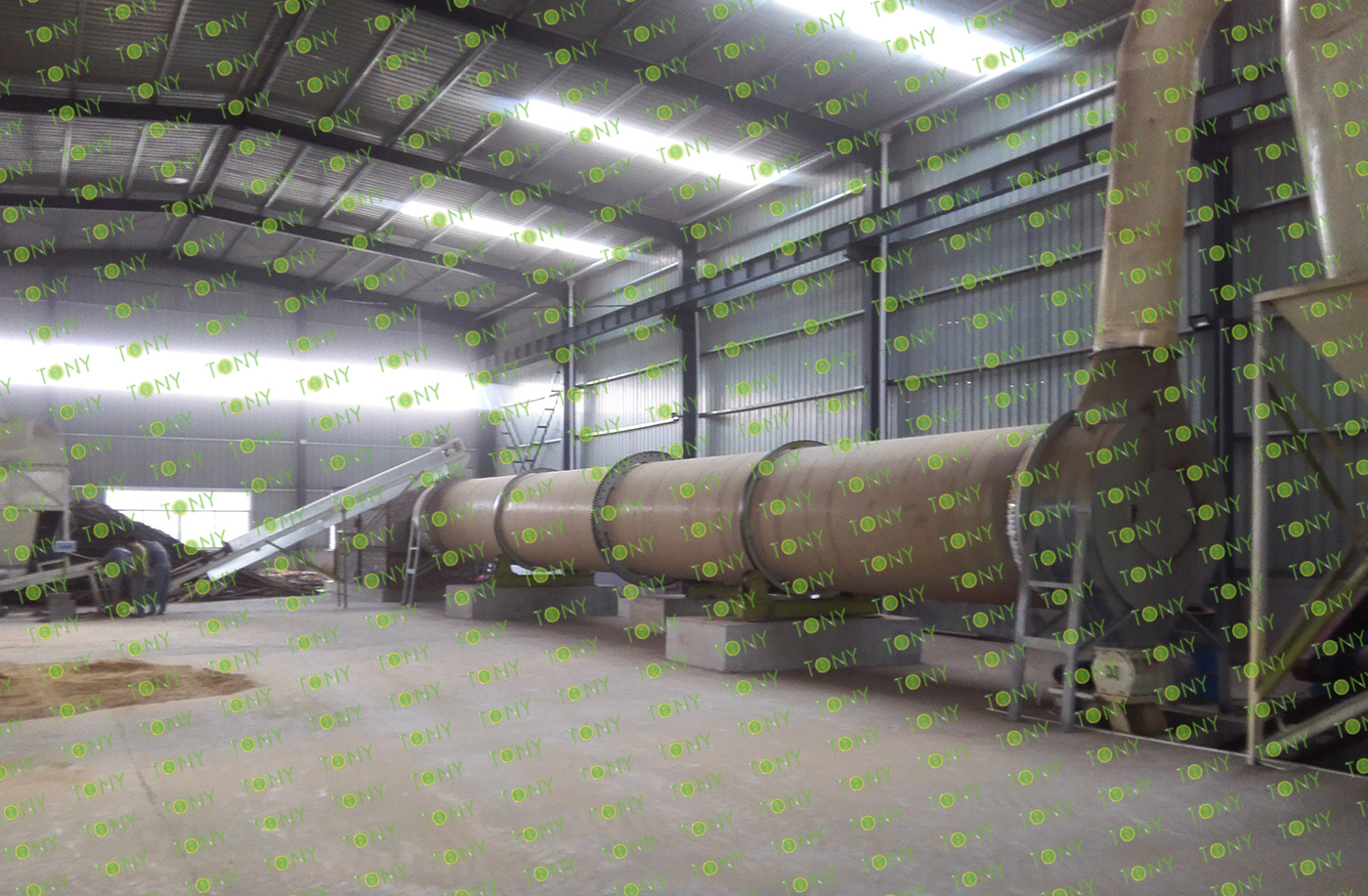

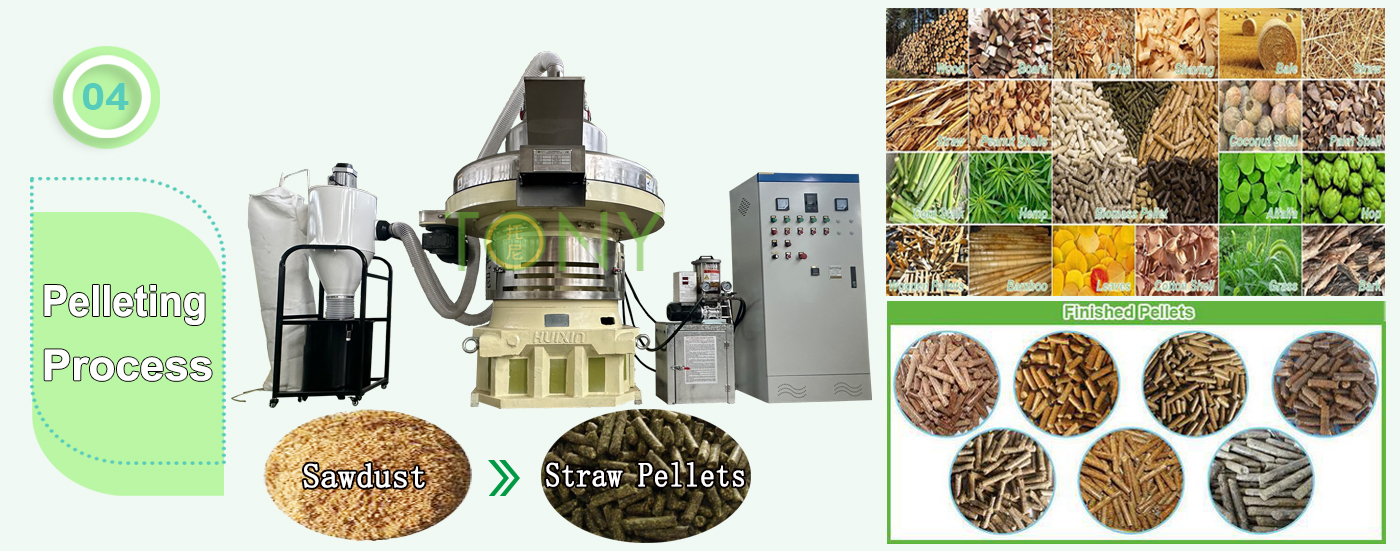
|
4.Pelleting Process: A.This process is mainly used to product pellets with φ6-8mm. B.Biggest Capacity: Flax straw3.5-4.5 Ton/Hour/Set. C.The Customer Chose 15 Sets Of TONY Brand Vertical Ring Die Pellet Machine TYJ860-Ⅲ-250Kw Total Capacity 52.5-67.5 Ton/Hour. Main Parts: (1)TONY's new vertical ring die pellet machine. (2)Cyclone and bags dust collectors. (3)Bearings automatic lubrication system. (4)Electrical cabinets. You can choose TONY new type SS304 pellet machine or old type MS pellet machine. |
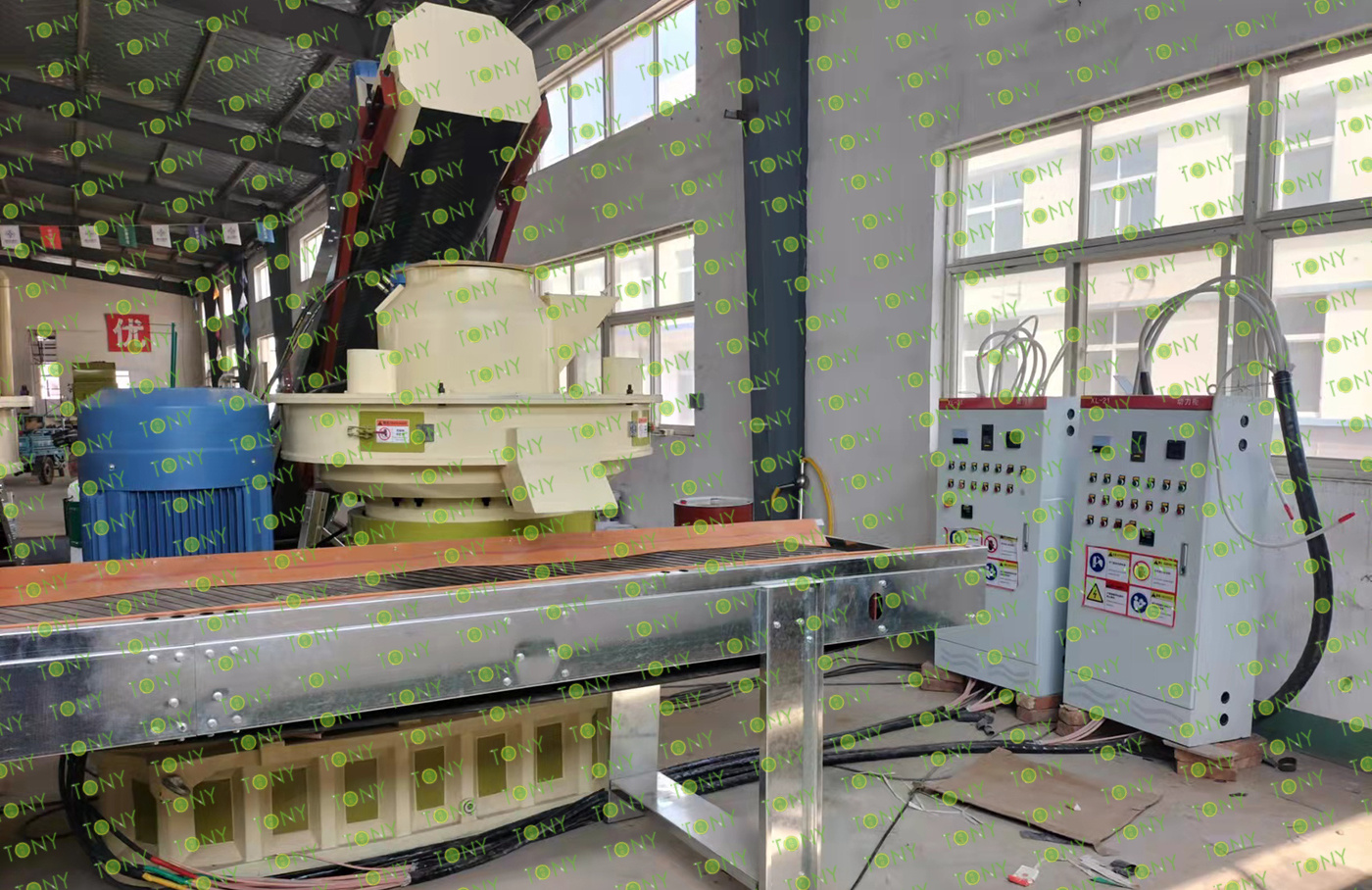

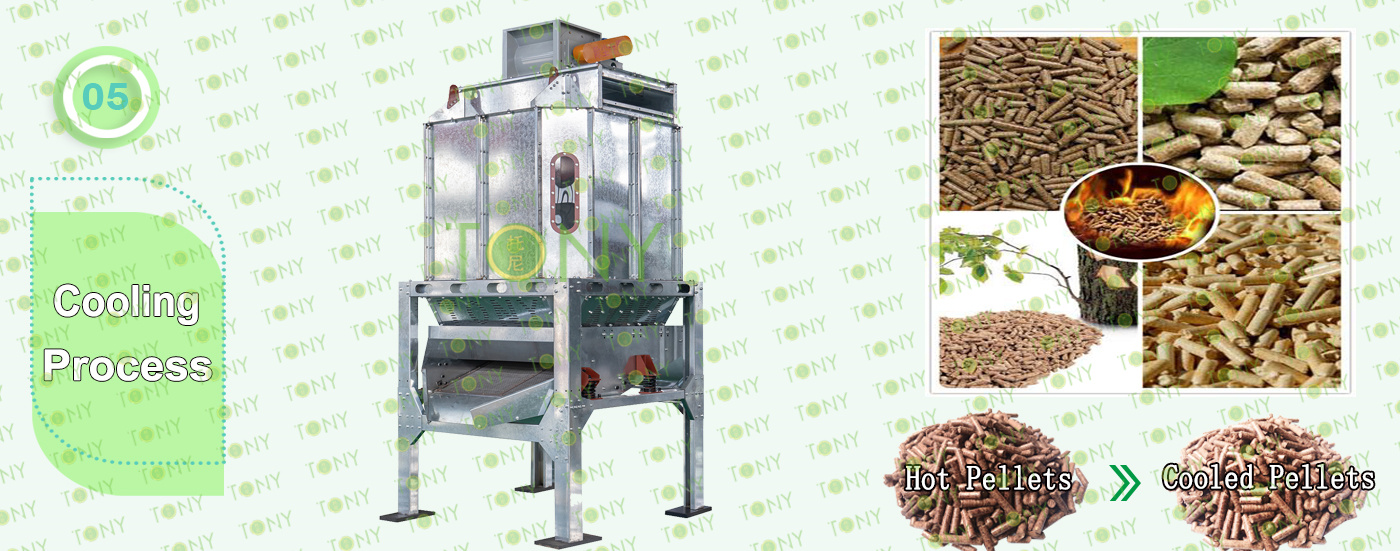
5.Cooling Process:
A.This process is mainly used to to cool pellets from 80-90℃ to 20-30℃
B.The customer chose 3Sets of TONY Galvanized Cooler Separator with capacity 18.5-20Ton/Hour/sets
Main Parts:
(1)TONY's new Galvanized Cooler Separator With Vibrating Screen.
(2)Cyclone and bags dust collectors.
(3)Fan Blower.
(4)Connect Pipes.
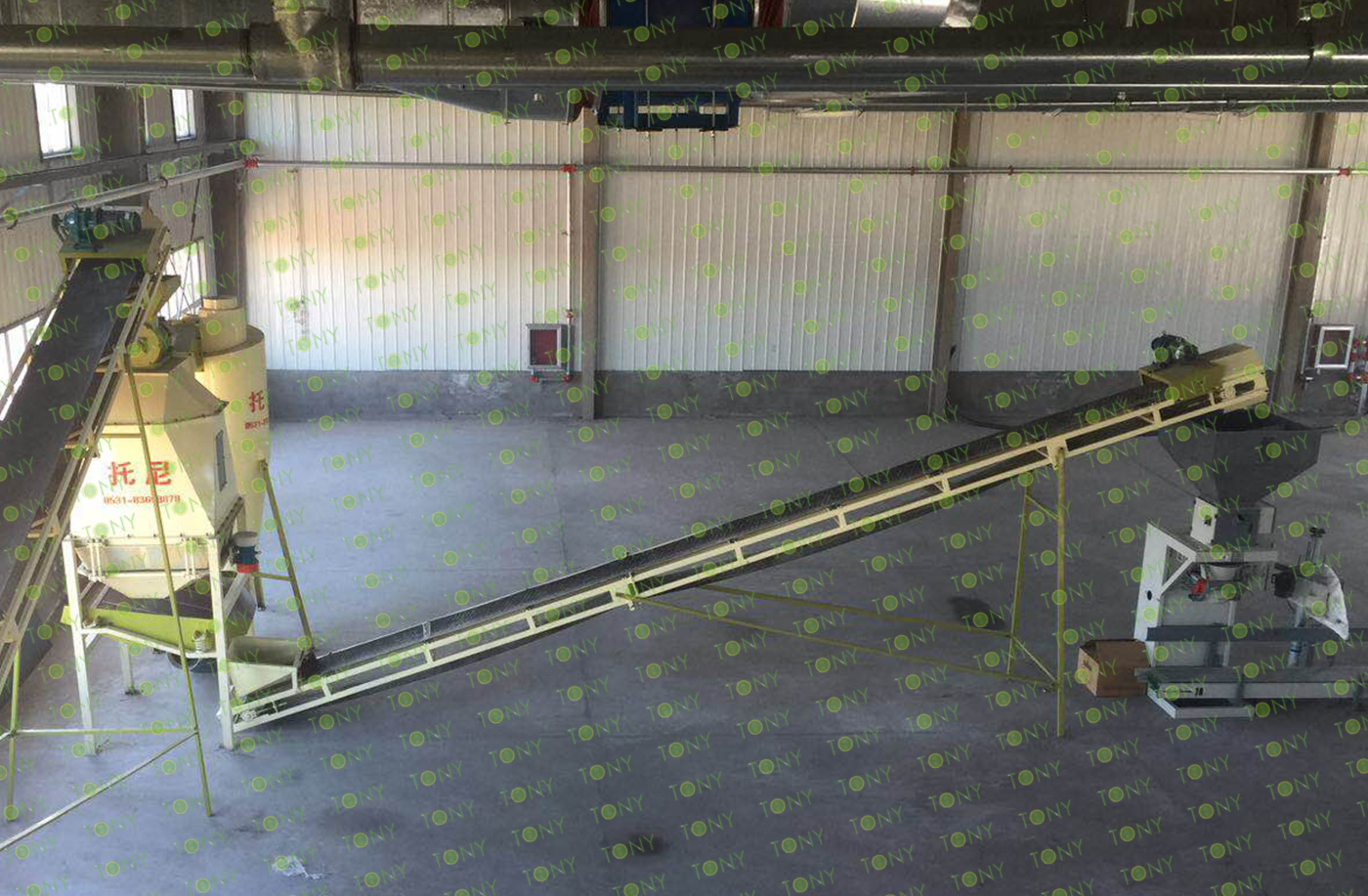

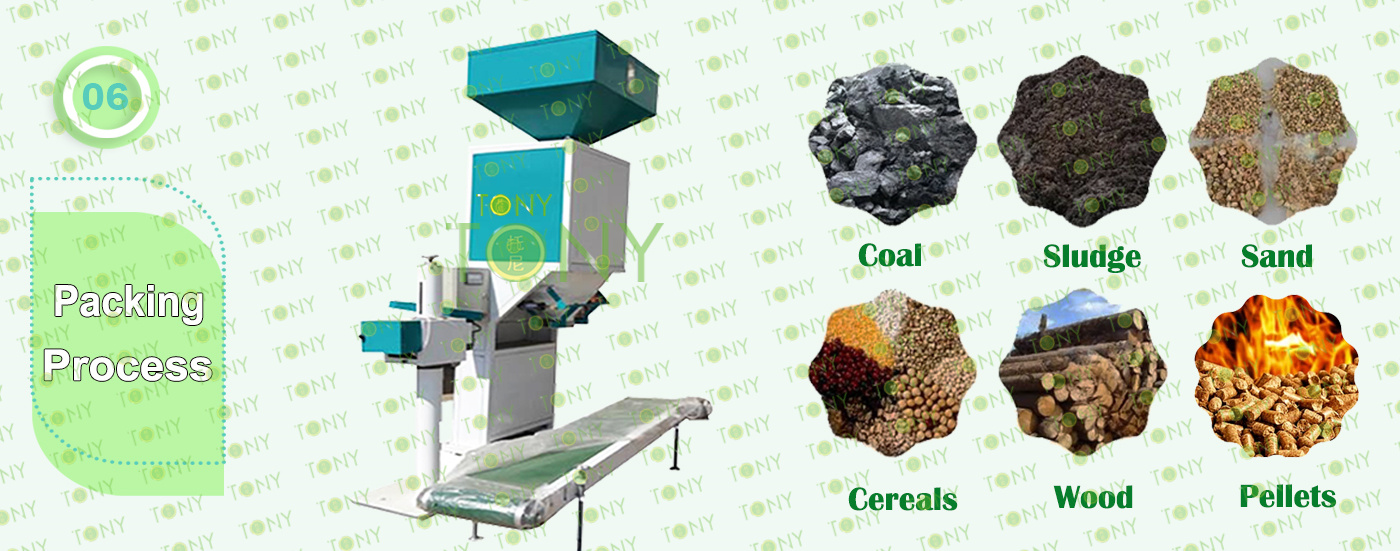
6. Packing Process:
A.This process is mainly used to Packing Pellets To 15-50KG/Bags .
B.The Customer Chose 12 Sets Of TONY Packing Machine With 4.5-5Ton/Hour/set.
Main Parts:
(1)TONY's new TONY Semi-automatic Packing Machine.
(2)Sew Machine,Buyer Can Also Chose Hot Seal Machine For Chosen,To Confirm With TONY For The Price Difference.
(3)Bags Transportation Conveyors.
(4)Feeding Inlet Silo With 1㎥.
(5)Electrical cabinets.
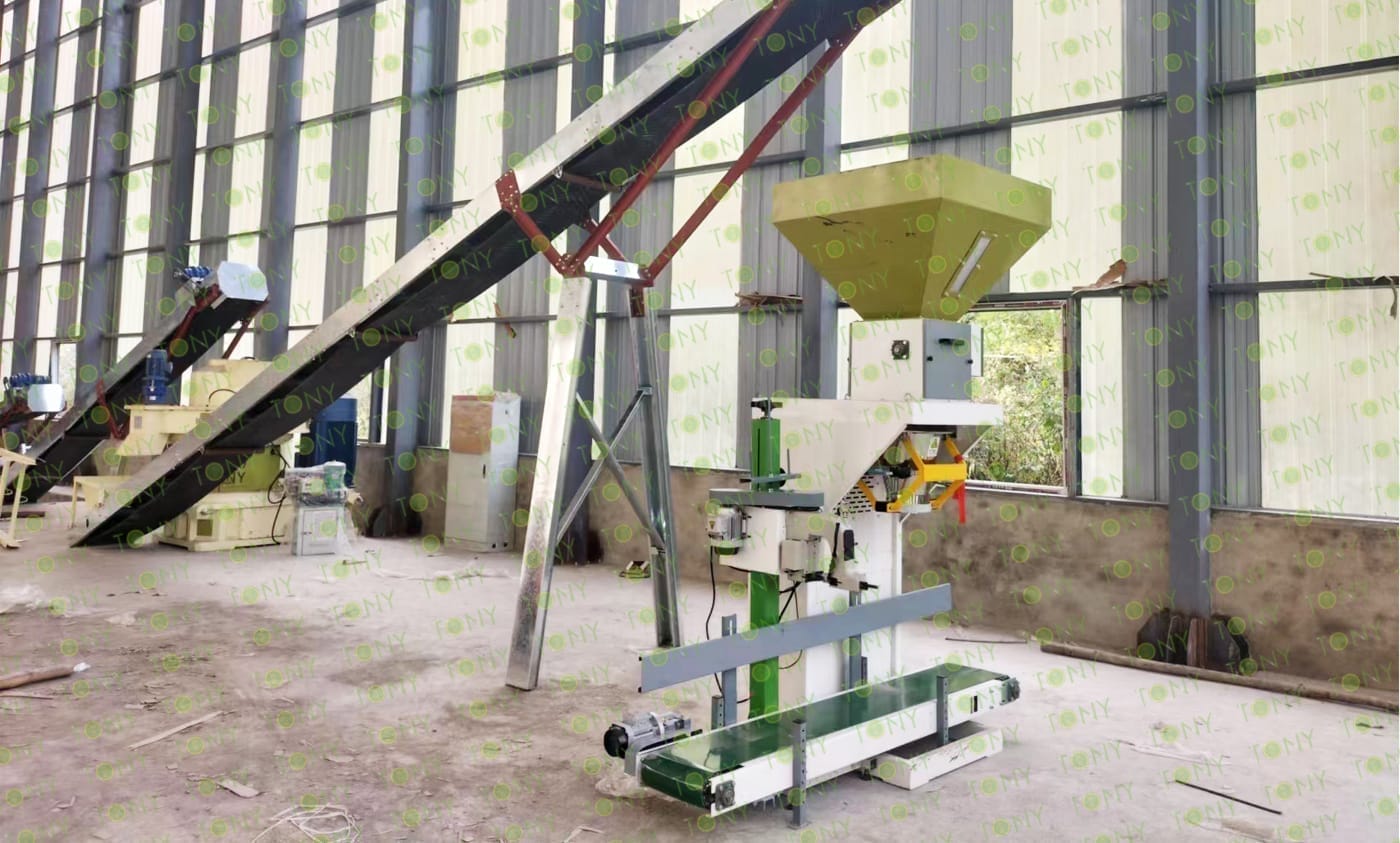

TONY Detailed Design 3D Layout With Detailed Size For 55-60 Ton/Hour Flax straw Pellet Line According To Cusomer Factor
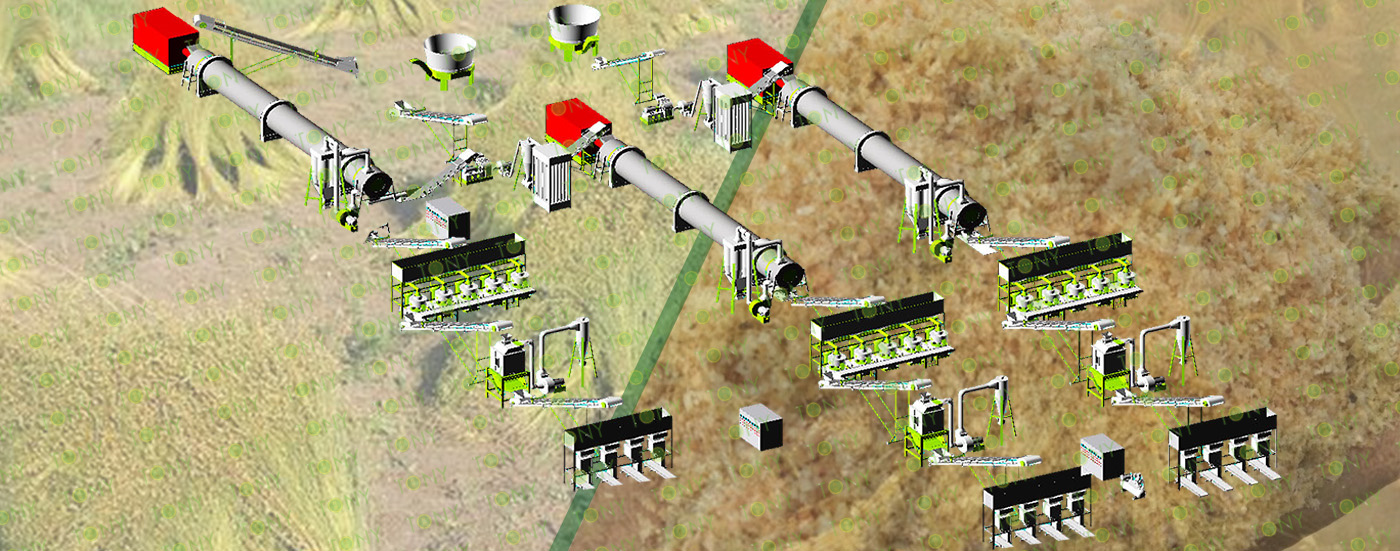

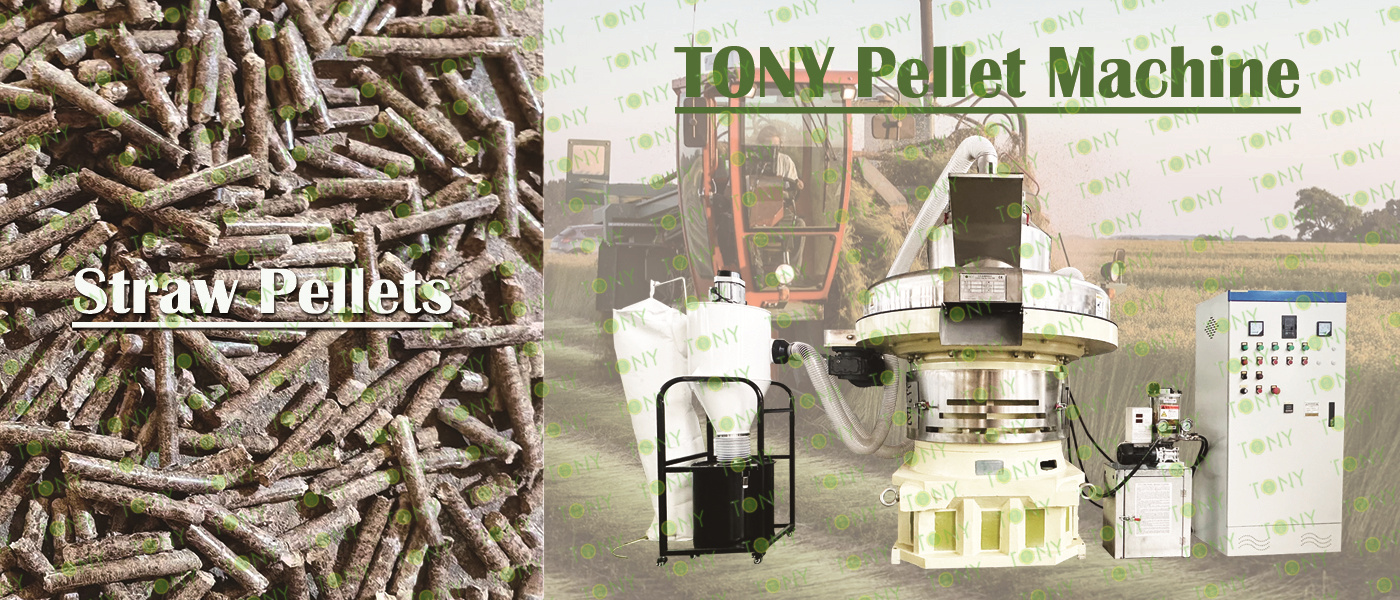
Promote the comprehensive utilization of flax straw
The energy problem will become a bottleneck for global economic growth. Shortages of coal and electricity will persist for a while. The development of new energy, the reduction of waste and the protection of the environment have become the urgent tasks of the current economic construction. In the past, in addition to the life of flax straw, the rest of the main feed, paper, organic fertilizer, etc., but now the amount of straw used by farmers is less and less, and the amount of straw used by feed is very straw papermaking is gradually fading out of the market. In this way, a large number of discarded stalks have to be burned, seriously polluting the environment, but also caused traffic, fire and a series of problems. Using straw to make biomass pellet fuel can effectively solve these problems.
Flax straw pellets are renewable energy sources
Flax straw has abundant resources, sufficient raw materials, low cost and remarkable comprehensive benefits. Flax straw by crushing, crushing, drying, molding, inspection, packaging and other processes can become a substitute for coal, a rare renewable energy. Inexhaustible, inexhaustible, recycled. Material energy is a renewable energy that the state encourages the development of, and will become an important part of the energy system in the future, in this context, more and more customers choose flax straw biomass pellet production line as an investment project. Flax straw biomass pellet production line for the development of new energy and renewable clean energy to improve the ecological environment, save non-renewable energy, improve the quality of life, has an important social significance, to promote the development of energy and crop straw and other biomass waste comprehensive utilization, the industry technological progress and industrial structure adjustment will play a positive role in promoting.
Flax straw pellets are widely used
Biomass straw pellet fuel is gradually penetrated from the outside to the inside in the combustion process, burning smokeless, tasteless, pollution-free will not cause pollution, easy to use, but also can extend the combustion time, save fuel, save working hours can reduce costs by 30%. It can be used as fuel for civil life and fuel for residential heating. It can also be used as fuel for industrial production, boilers and power plants. It can also earn foreign exchange by exporting to countries that need pellet fuel around the world.

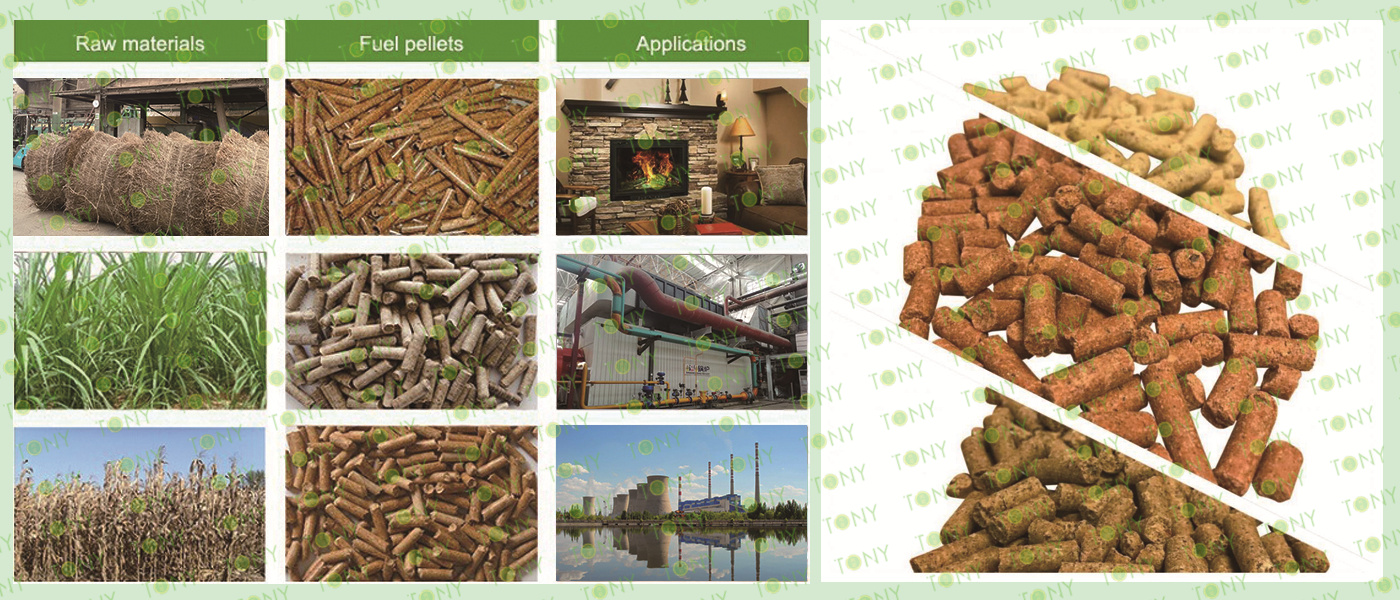
The survival and development of human beings cannot be separated from energy, with the rapid growth of the world's energy demand, but as the main sources of human energy, oil, natural gas and coal are rapidly decreasing. According to the statistics of the International Energy Agency, if the current momentum continues to develop, without restraint, then the three kinds of energy on the earth for human exploitation of only 40 years, 50 years and 240 years. Therefore, it is an important way to solve the energy crisis and environmental problems to vigorously improve the utilization efficiency of energy, develop low pollution and renewable new energy with high and new technology, and gradually replace non-renewable energy such as oil, coal and natural gas. Biomass pellet fuel made from flax stalk, corn stalk, wheat stalk and other agricultural resources is an ideal renewable biomass energy.The advantages of flax straw pellets are as follows:
1. Almost Zero Emissions Compared To Coal
Flax straw biomass pellets are low carbon and low sulfur environmental protection fuel, compared with coal, CO2 emissions are 97.91% less than coal, SO2 emissions are 99.15% less than coal, NO2 emissions are 72.09% less than coal, so relative to the high pollution emissions of coal, biomass pellet fuel emissions are almost zero.
2. Biomass Pellets Belong To Environmental Protection And Green Energy
Biomass pellet fuel is recognized as environmental protection "green coal", why is it called green coal, mainly biomass pellet fuel is processed from agricultural and forestry waste, so the green property is obvious. Like straw, sawdust, shavings, peanut shells, rice husks, etc., can be processed into pellets.
3. Biomass Pellets Are Recycled Renewable Energy
At present, China's biomass fuel types are relatively complete, coal and gas reserves are limited, there are always exhausted, and biomass fuel will not be exhausted. Therefore, biomass pellets turn agricultural and forestry waste into treasure, which not only treats agricultural and forestry waste, but also saves energy, and has the advantage of recycling.
4. Biomass Pellets Have Obvious Cost advantages Compared With Gas
Biomass pellets are a relatively low cost energy, the cost of biomass pellets is less than half of natural gas, and electric energy is 3 times that of biomass pellets.


Biomass pellet fuel is the straw, rice husk, sawdust, wood chips and other biomass waste, with mechanical pressure method, so that the original loose, amorphous raw materials compressed into a certain shape, high density solid molding fuel, which has a small volume, high density, convenient storage and transportation; The combustion is stable and the period is long. High combustion efficiency; Low pollutant content in ash and flue gas. Biomass molding fuel is composed of combustible substance, inorganic matter and water, mainly containing carbon (C), hydrogen (H), oxygen (O) and a small amount of nitrogen (N), sulfur (S) and other elements, and contains ash and water.
★Carbon: Biomass molding fuel fuel carbon content is small (about 40-45%), especially the fixed carbon content is low, easy to burn.
★Hydrogen: biomass molding fuel fuel contains more hydrogen (about 8-10%), high volatile content (about 75%).
★Most of the carbon in biomass fuel is combined with hydrogen to form low molecular hydrocarbons, and the volatiles are precipitated after thermal decomposition at a certain temperature.
★Sulfur: The sulfur content of biomass molding fuel is less than 0.02%, and there is no need to set the flue gas desulfurization device when burning, which reduces the cost and is conducive to environmental protection.
★Nitrogen: The nitrogen content of biomass molding fuel is less than 0.15%, and NOx emission is fully up to standard.
★Ash: Biomass molding fuel, fuel using high-quality wood biomass as raw materials, ash content is very low, only about 1%.
★Calorific Value Of Biomass Molding Fuel: The density of biomass molding fuel is generally 1.1 ~ 1.4t/m3, and the calorific value is about 4,100±100Kcal/Kg. One ton of biomass molding fuel is equivalent to 0.55 to 0.6 tons of standard coal or 0.4 tons of diesel/fuel oil
As we all know, human survival and economic development can not be separated from energy. With the rapid growth of the world's energy demand, the conventional energy represented by coal, oil and natural gas will eventually be exploited out, and the massive use of these fossil fuels will lead to a series of serious environmental pollution problems. Therefore, vigorously improve the efficiency of energy use, biomass pellet machine as the representative of high-tech development of low pollution, renewable new energy, gradually replace oil, coal, natural gas and other non-renewable energy, is an important way to solve the energy crisis and environmental problems. Among many renewable energy sources, biomass pellet fuel has great potential for development because of its abundant resources, clean, convenient and renewable characteristics.

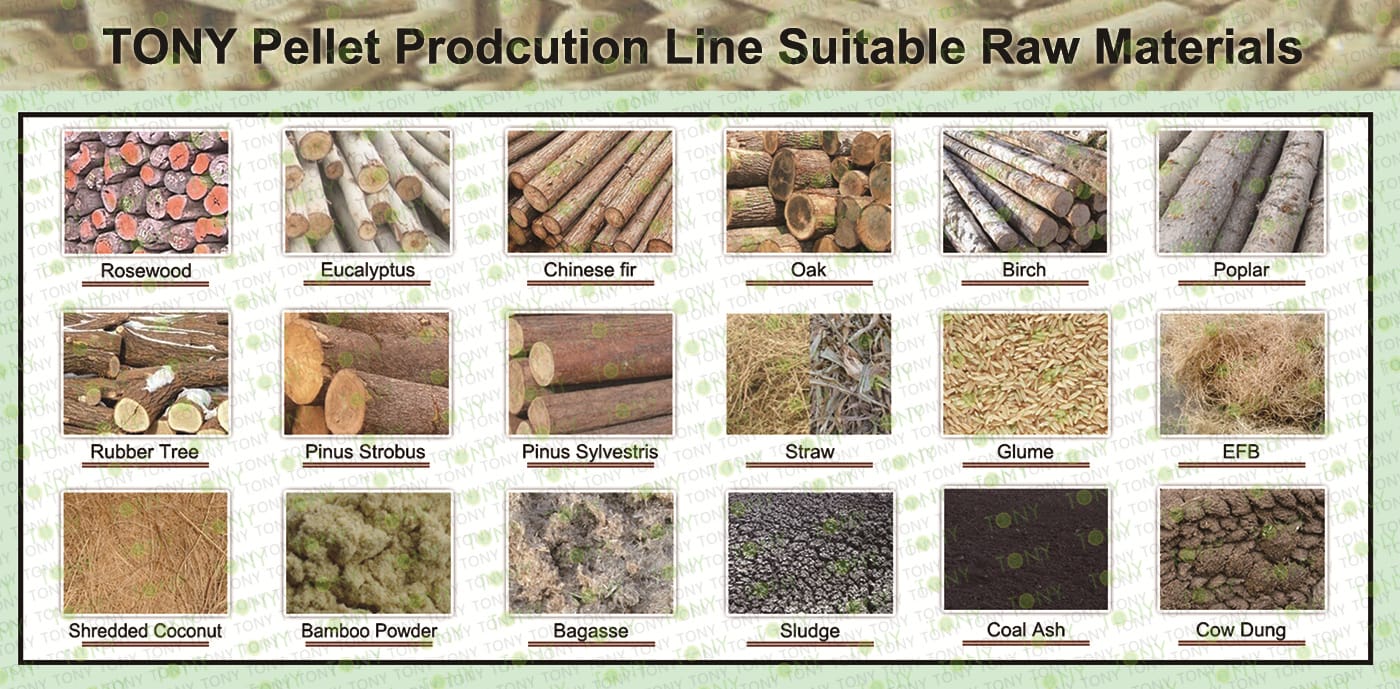
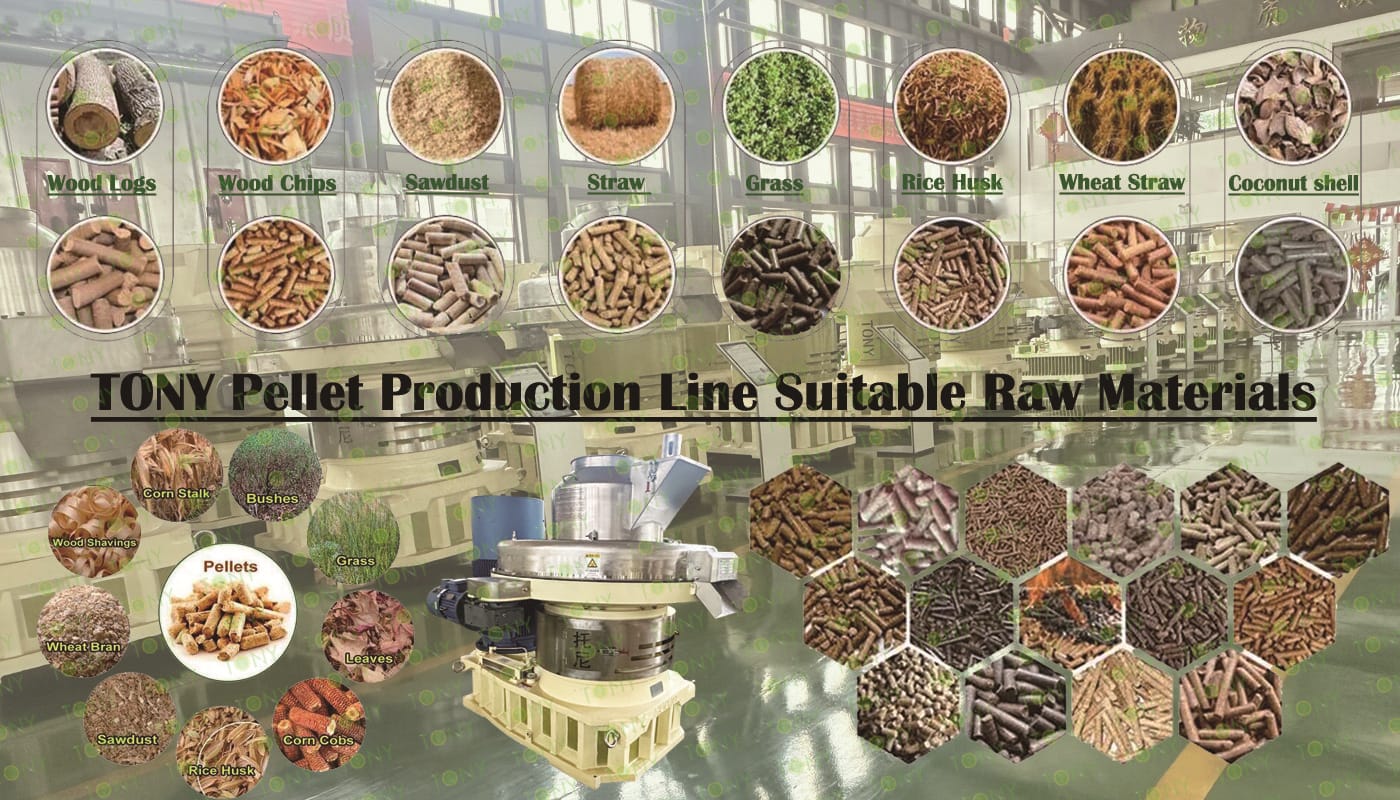




2025 Tony Machinery - All Rights Reserved. Map